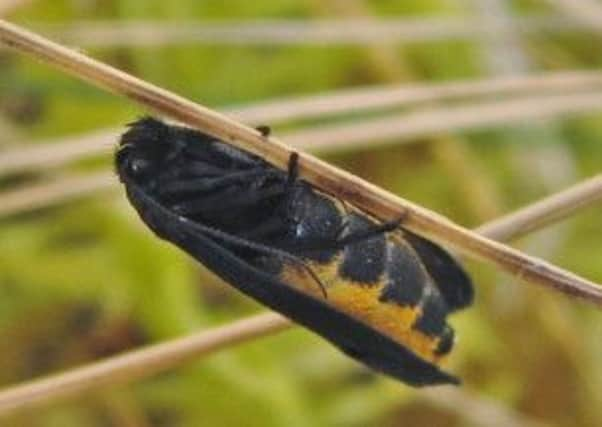Moths back in big numbers after 150 years


The distinctive mountain ermel micro moth was first recorded in northern Scotland in 1853.
It was not seen again for around 150 years, until it was rediscovered in the Cairngorms in 1996.
Advertisement
Hide AdAdvertisement
Hide AdSince then, only a further three individuals had been found, all at sites in the north-eastern Highlands.
Now the tiny species, whose Latin name is Ethmia pyrausta, has been seen around the border of Easter Ross and Sutherland 15 times in five weeks.
Experts believe the recent spate of sightings is a “significant discovery”.
Nigel Richards, from the Highlands and Islands branch of the wildlife charity Butterfly Conservation, was out searching for emperor moths when he made the initial find on Croick Estate in April.
He identified two adults, both with the typical hairy orange underbelly and dark grey fore-wings marked with black spots.
Since then he has recorded another 13, including two found on last month during a search for the moth’s caterpillars, which have never been seen in the UK.
“This is only the sixth British record of this moth,” Mr Richards said.
“It was first discovered in 1853 on the banks of the River Shin and then rediscovered in 1996 in the Cairngorms.
Advertisement
Hide AdAdvertisement
Hide Ad“Single specimens were also found at Loch Vrotachan in Aberdeenshire in 2001, near Loch Morie in 2008 and on the slopes of Ben Griam Mor in 2012. Before now there has never been any evidence that Ethmia pyrausta has been breeding in the UK, but the discovery of so many adult moths in one location is highly significant.”
The mountain ermel is more commonly found in northern Scandinavia and neighbouring parts of Russia.
Croick Estate, where the moth was found, covers 12,000 acres in the northern Highlands, 75 miles north of Inverness.
James Hall, whose family owns the estate, said: “We’re absolutely delighted at this new discovery which, after everyone’s hard work to manage the land and improve its biodiversity, feels like a huge reward.
“We will continue to work with Butterfly Conservation to understand more about this rare moth, its population size and why it’s prospering in this particular location.”
The charity’s head of moth conservation, Mark Parsons, said: “Hopefully, this will lead to a better understanding of this moth’s habitat requirements and perhaps the discovery of further colonies in the future.”
Despite the sightings of adult moths, none of the two centimetre-long caterpillars have been found in Scotland.
“I haven’t given up on looking for the caterpillars,” said Mr Richards, who has planned a further search next month.
Advertisement
Hide AdAdvertisement
Hide AdIt is not known for sure what the young eat at their Highland stronghold but experts suggest it could be alpine meadow-rue, a plant found on the higher ground of the estate and at confirmed breeding sites in Europe.”